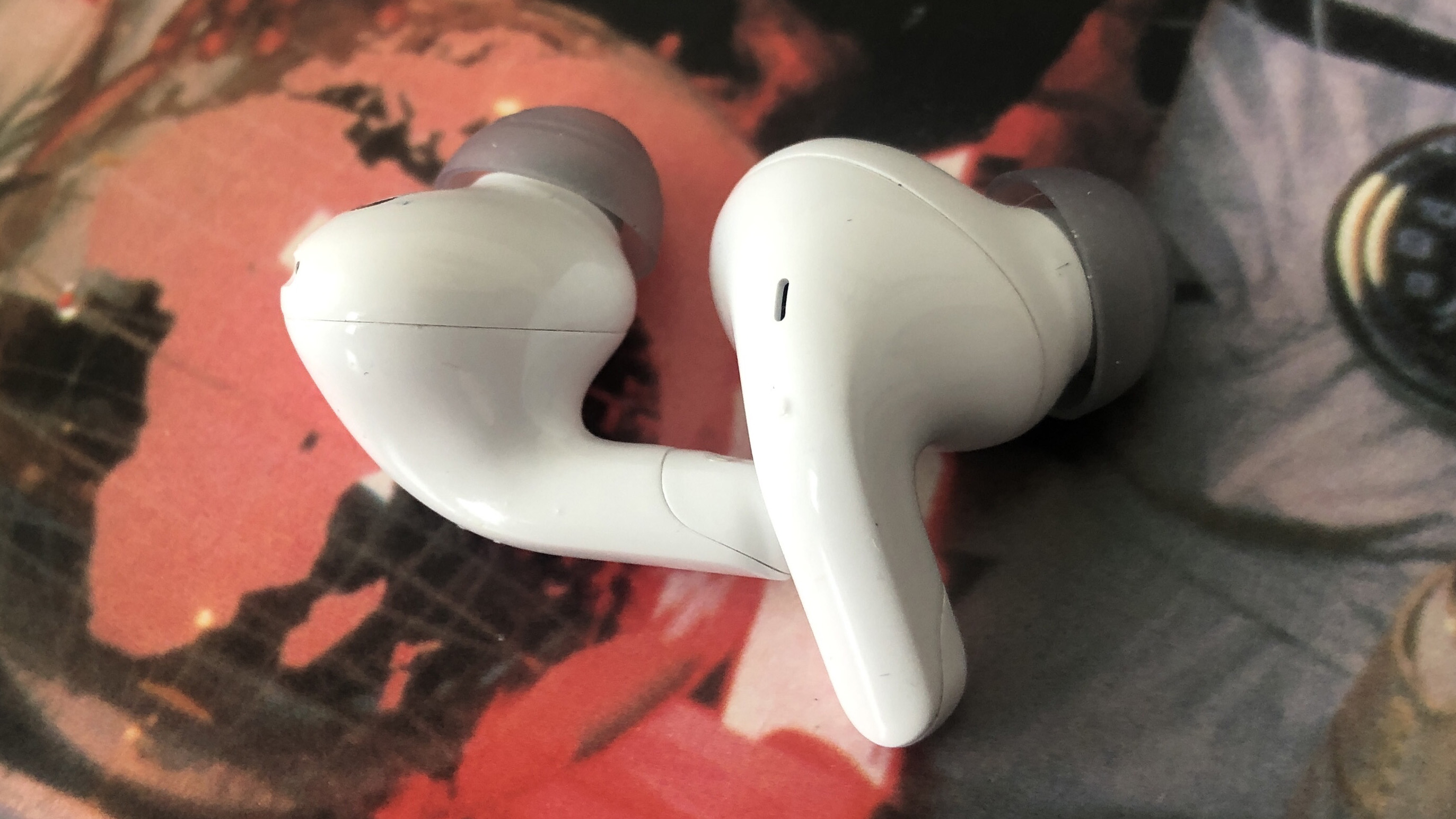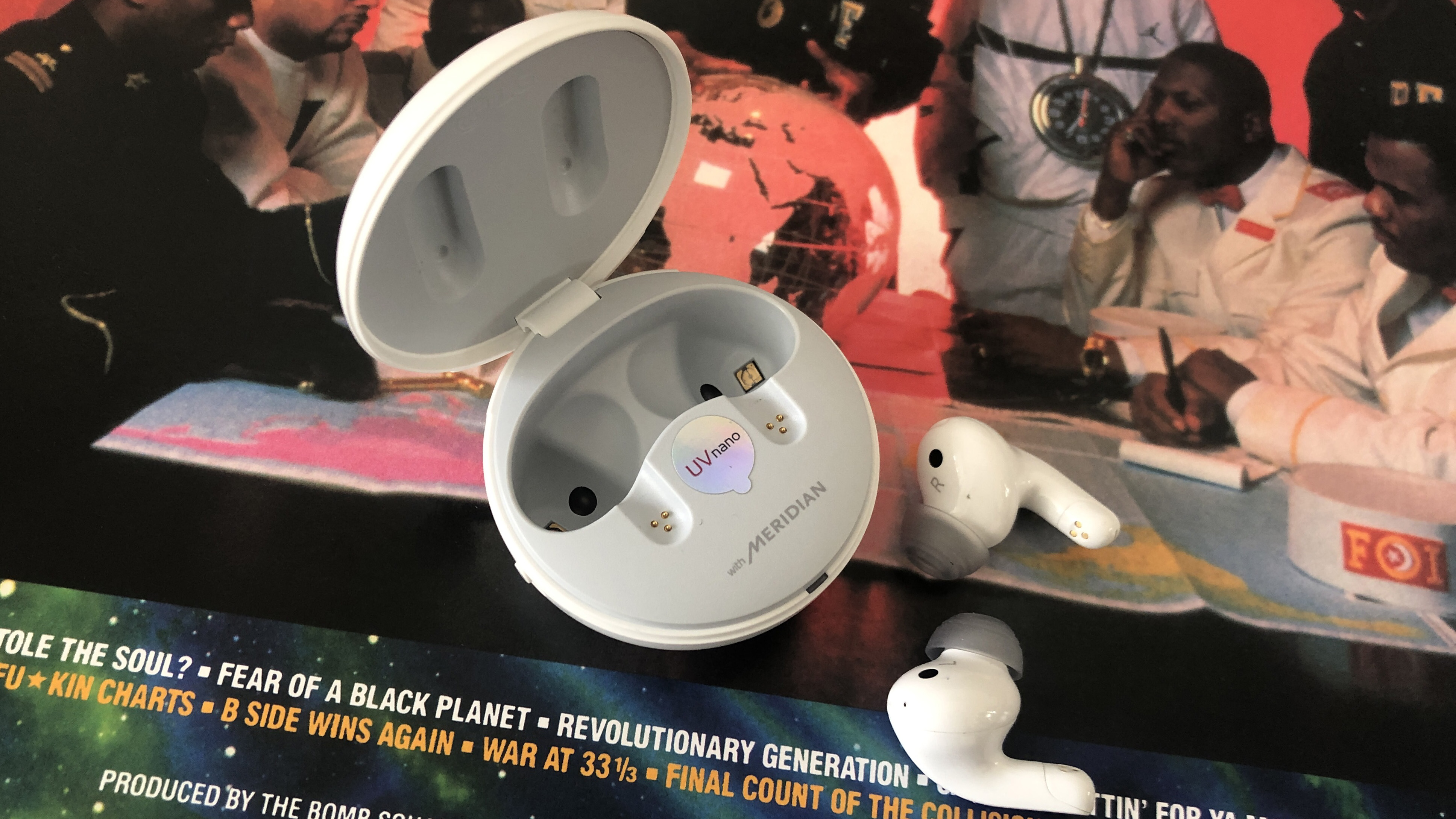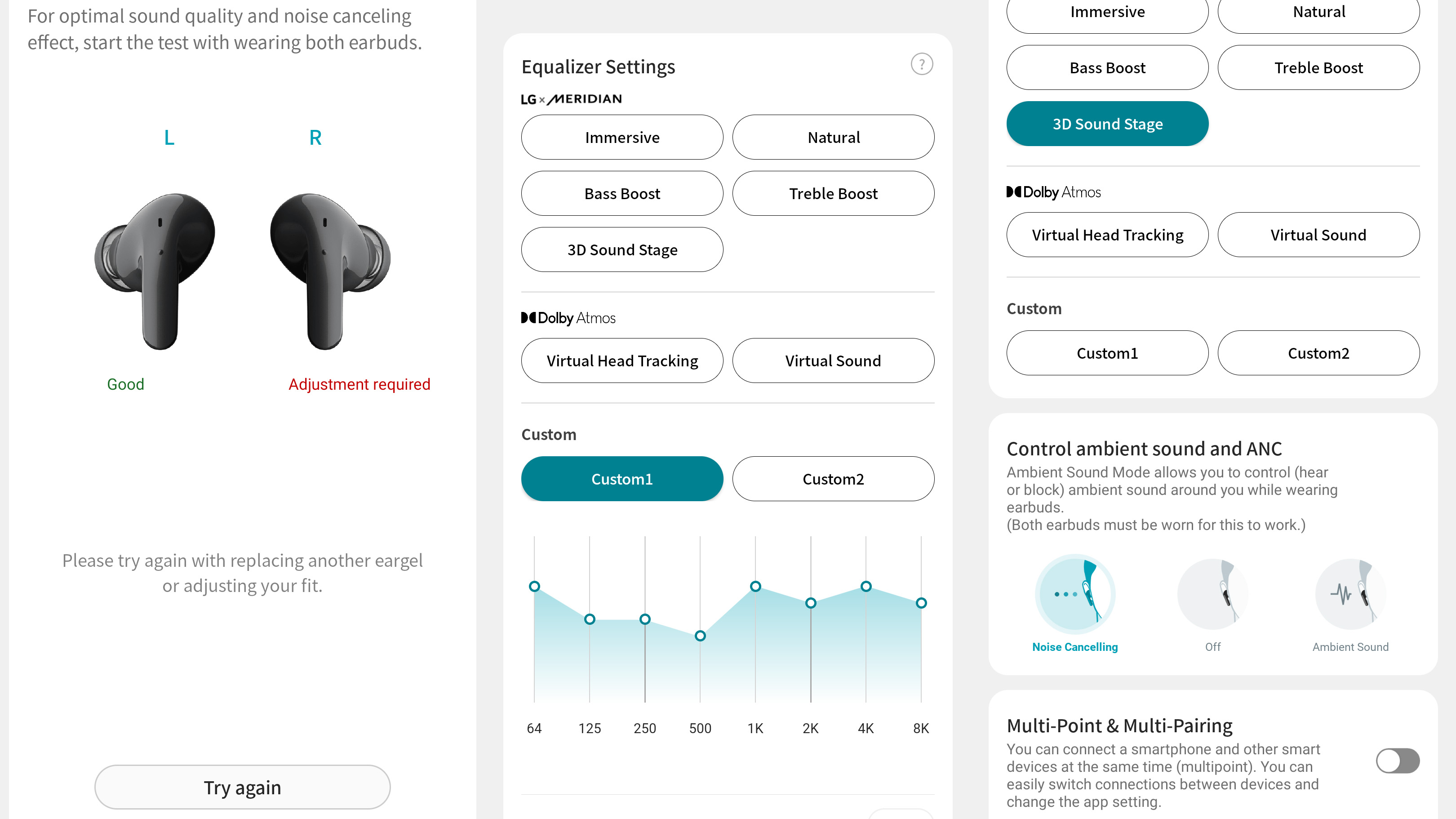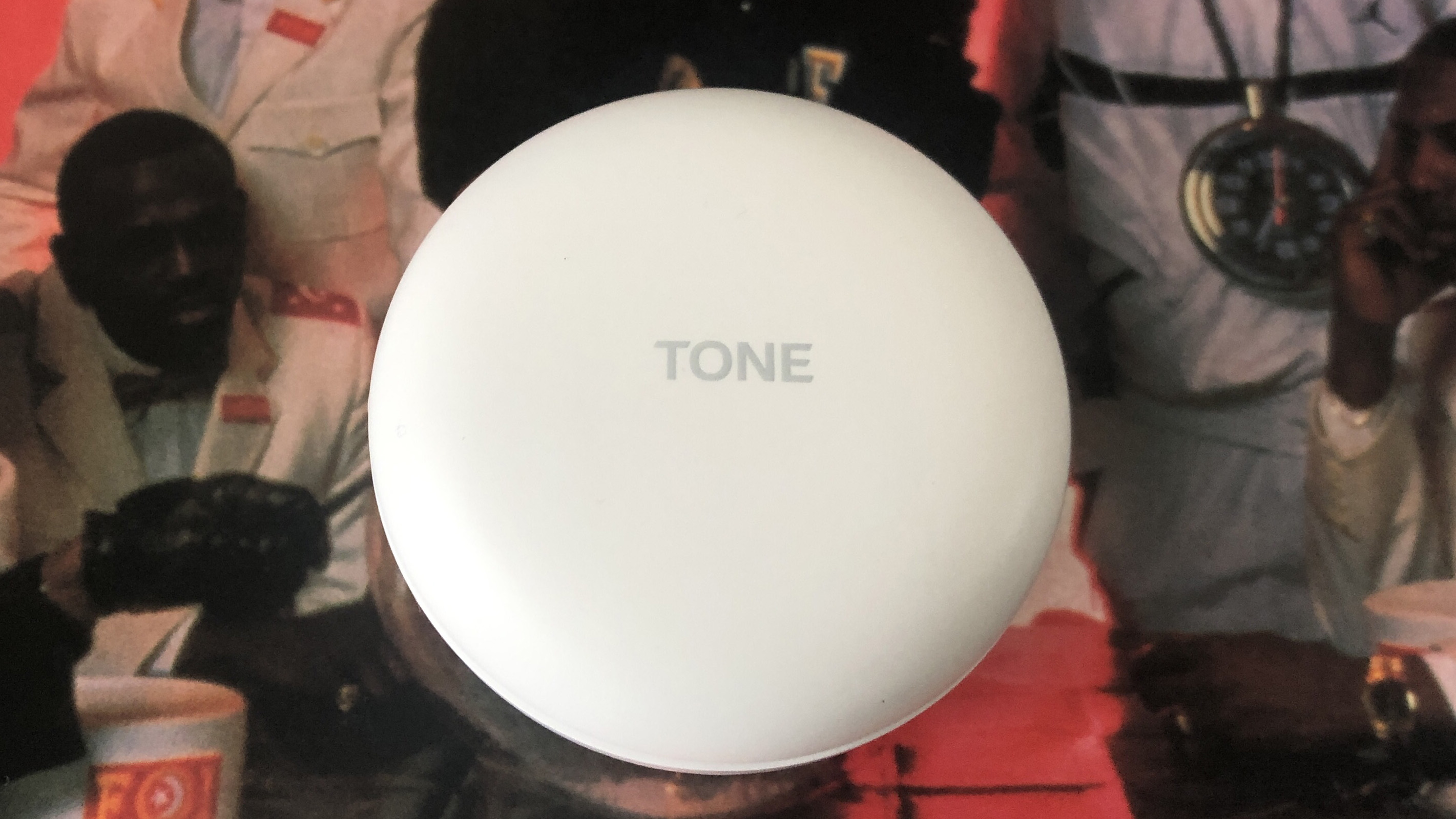LG Tone Free UT90Q review: features galore but ANC is poor
A strong features list delivers in some areas, but the noise-cancelling and touch controls fall short

Good sound quality and some interesting peripheral specification carry the UT90Q so far, but shortcomings with ANC and touch control are hard to overlook.
-
+
Expansive, well-defined sound
-
+
Huge spec includes Dolby Atmos spatial audio
-
+
Light, comfortable earbuds and compact charging case
-
-
Unhelpful active noise-cancellation
-
-
Poorly implemented touch controls
-
-
So-so call quality
Why you can trust T3

Lord knows it’s tricky to stand out in a market as congested as that for true wireless in-ear headphones. LG thinks it knows how, though - so its ‘Tone Free’ earbuds have a specification sheet as long as your arm.
That’s all well and good, of course, but there’s no point having a load of features if their on-paper promise doesn’t translate to real-world effectiveness. Which, of course, is where we come in. So is the LG UT90Q worth a look?
LG T90Q: Price & Availability
The LG ‘Tone Free’ UT90Q true wireless in-ear headphones are on sale now, and in the United Kingdom they sell for £199. American customers are looking at $229, while in Australia the going rate is AU$329 or so.
Of course, these days you can pay what you like for true wireless in-ears. Our current favourites from Sony, Apple and Bowers & Wilkins are all more expensive, although there are very good alternatives from Panasonic, Cambridge Audio and Sony (again) that are quite a bit more affordable.
What’s for sure, though, is that you won’t be able to buy a more thoroughly specified alternative no matter how much you spend…
LG T90Q review: Features

LG has thrown the kitchen sink at the UT90Q. Or maybe it’s gone to town. You can choose your own figure of speech - just make sure it means the UT90Q have everything you’d expect from true wireless in-ears at this sort of money, plus a bit more on top.
Wireless connectivity, for example, is via Bluetooth 5.3 and there’s support for SBC, AAC and aptX Adaptive codecs. The UT90Q are compatible with spatial audio and head-tracking technologies courtesy of Dolby - indeed these are the world’s first Dolby Atmos true wireless in-ears with Dolby head-tracking.
Get all the latest news, reviews, deals and buying guides on gorgeous tech, home and active products from the T3 experts
EQ presets are the work of UK hi-fi savant Meridian. There’s adaptive active noise-cancellation (ANC), multi-point wireless connectivity and a charging case that doubles as a Bluetooth transmitter. Oh, and the case features UV-C lighting which, LG claims, can kill 99.9 per cent of the bacteria on your earbuds within five minutes of them being shut in the case.
What else? Well, sound itself is delivered by a pair of 11mm full-range Graphene dynamic drivers. The UT90Q support wireless charging and fast charging too. Battery life is quoted at nine hours (with ANC switched off) from the earbuds and more like five hours if ANC is switched on - five minutes on the power will deliver an hour’s-worth of playback though. The charging case itself will hold slightly more than three full charges. An IPX4 rating means the earbuds are able to deal with moderate exposure to moisture.
At this point I’m tempted to ask what more you want. Jam on it? If there are more exhaustively specified true wireless in-ear headphones out there at this price, I’ve yet to encounter them.
LG T90Q review: Performance

There’s a lot to like about the way the UT90Q sound. Where the broad strokes of stereo performance are concerned, they have some areas of real expertise - the soundstage they create, for example, is broad and well-defined, which makes even quite complex recordings easy to understand and follow. They’re quite even throughout the frequency range, too, and at any level of volume - so nothing from the top of the frequency range to the bottom is overstated or underplayed.
Detail levels are respectably high across the board. So as well as offering decent depth, the bass response the LG produces is textured and carries lots of variation - even if the low-end sounds in question are machine-, rather than instrument-generated. The top-end is equally informative and equally well controlled, while the midrange is as articulate and expressive as your favourite vocalist needs it to be.
There’s not a whole lot of dynamic headroom on display, mind you - the UT90Q aren’t all that adept at putting appreciable distance between the quiet, contemplative part of the song and the almighty charge into the last chorus. And while they don’t exactly have two left feet, they’re not the most naturally expressive where rhythms are concerned, either - there are more gregarious dancing partners around.

All of this presumes you’re listening with EQ settings left well alone. Even when listening in straight stereo, it’s possible to make quite fundamental adjustments to the sonic characteristics of the UT90Q - although it’s probably fair to say that ‘different’ in this instance doesn’t automatically equate to ‘better’. Of course, if you’re all ‘bout that bass then you can put a rocket up the LG low-end response, for example - but it won’t be any better defined or dynamic. What it will do, though, is trample heedlessly over the midrange. Mind you, if you listen to a lot of podcasts, say, one or two of the Meridian presets help make things more intelligible.
As far as the spatial audio effect is concerned, there’s no denying its effectiveness. Dolby Atmos mixes streamed from Tidal (for example) are wide open, remarkably spacious and have an unarguable ‘dome of sound’ sensation to them - and the more effective the mix, the more pronounced the effect. Head tracking, meanwhile, is equally noticeable but a lot more difficult to get excited about - it’s simply a ‘balance’ control operated by your head, isn’t it?
The active noise-cancellation on offer here is quite a lot more difficult to get excited about. First of all, no matter how you’ve fiddled with the sound of the UT90Q in the control app, if you switch ANC ‘on’ it will be altered - almost always by becoming more diffuse and less positive. And by way of adding insult to injury, the ANC isn’t all that adept at keeping external sounds at bay.
It’s the same, but different, where call quality is concerned. The same insomuch as it’s not very effective or satisfactory; different in that it lacks intelligibility rather than alters any sonic balance.
LG T90Q review: Design & Usability

LG has been a believer in the ‘long stem’ true wireless design for a while now, and it’s not about to change course now. The UT90Q are available in black or white, and while they’re built entirely from plastic they feel both sturdy and quite upmarket. A selection of medical-grade silicone ear-gels help establish a secure fit, and at a touch over 5g per earbud they’re hardly a burden to wear.
At a tidy 55 x 55 x 30mm the puck-shaped charging case is easy to slip into a pocket, and as well as compatibility with Qi-certified pads it also has a USB-C input for charging. A small switch on the side turns it into a Bluetooth transmitter too - LG provides a 3.5mm / USB-C cable in the packaging, so any device with a 3.5mm output can be turned into a wireless source. Despite what it claims, LG isn’t first with this technology (Bowers & Wilkins deployed it a while back) - but it’s a nice bit of design nevertheless.
You’ve a few options when it comes to controlling the UT90Q - and it’s safe to say that some are rather better implemented than others. The capacitive touch controls towards the top of each stem fall into the ‘not especially well-implemented’ category, it has to be said - the touch-surface is small, not especially responsive and quite easily confused. So although the control app allows the required number of touches needed to access the available functions (play/pause, volume up/down, skip forwards/backwards, answer/end call, cycle through ANC options) to be customised, you’ll never be confident you’re going to get what you think you’ve asked for.

The control app, like the overall specification of the UT90Q, is best described as ‘exhaustive’. If there’s a function or a facility you want that isn’t available in the LG Tone Free app, well, I’m afraid you’re simply being unrealistic.
The app is where you can check the power remaining in the earbuds. It’s where you can choose from five Meridian-curated EQ presets, create a couple of your own using the eight-band equaliser, and explore Dolby Atmos-powered ‘Virtual Head Tracking’ or ‘Virtual Sound’. It allows you toggle through active noise-cancellation options - ‘on’ (with an adaptive element), ‘off’ or ‘ambient sound’, which has either ‘listening’ or ‘conversation’ sub-options - examine the user manual, and rearrange the touch-controls. You can check for software updates, run a test to make sure the earbuds are correctly fitted, and switch the ‘find my earbuds’ function on or off. You can even drag these numerous options around to best suit your needs.
Given its extensive nature, the app is remarkably stable and reliable. And the same can be said for the way the UT90Q interact with your source player’s native voice-assistant - there are a total of four pairs of mics across the earbuds to handle calls and ANC, and when you’ve woken Google Assistant or Siri your dealings with them are swift and reliable.
LG T90Q review: Verdict

There’s no reason you shouldn’t be interested in Dolby Atmos sound or an almost complete lack of bacteria where your true wireless in-ears are concerned - and on top of these fascinating features, the LG UT90Q don’t sound bad at all.
But their active noise-cancellation is as hamfisted as we’ve heard in a while, and their touch-controls are routinely frustrating - which makes these earbuds difficult to recommend unless you're really keen on that UV tech.
Also consider
No, they don’t do everything the LG UT90Q do, and no, we're sure it won’t be all that long before they are replaced by a shiny new model. But as it stands, the Sony WF-1000XM4 are the ‘buds to beat - that’s why our review pretty much says “best wireless buds in the world, full stop, end of story”.
Simon Lucas is a freelance technology journalist and consultant, with particular emphasis on the audio/video aspects of home entertainment. Before embracing the carefree life of the freelancer, he was editor of What Hi-Fi? magazine and website – since then, he's written for titles such as Wired, Metro, the Guardian and Stuff, among many others. Should he find himself with a spare moment, Simon likes nothing more than publishing and then quickly deleting tweets about the state of the nation (in general), the state of Aston Villa (in particular) and the state of his partner's cat.
